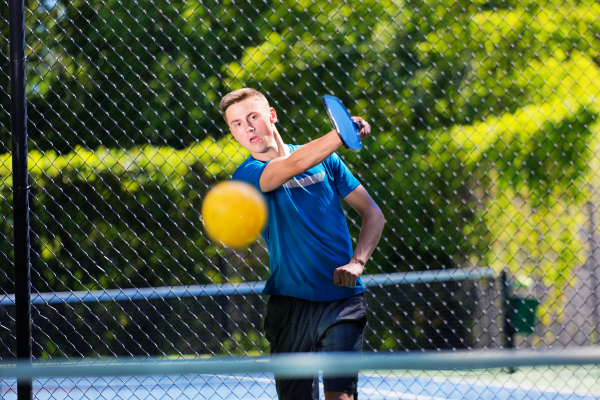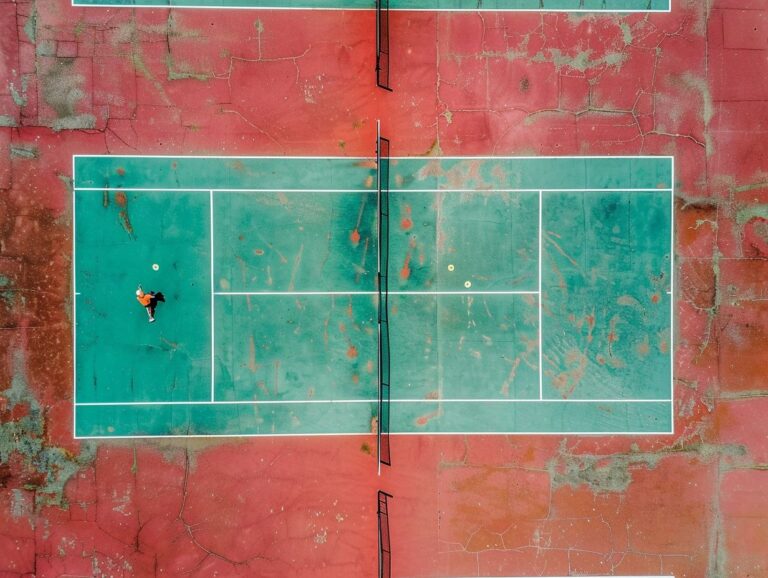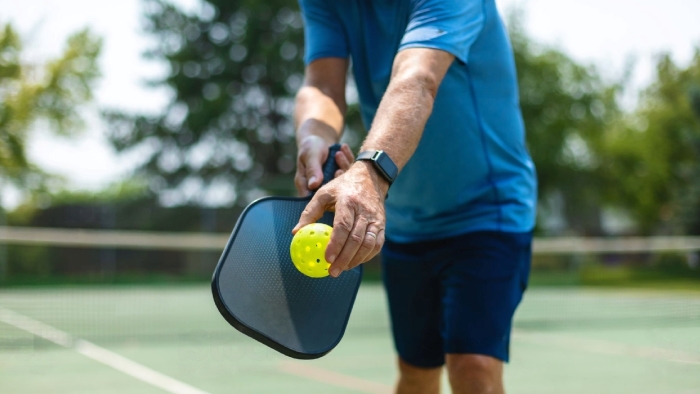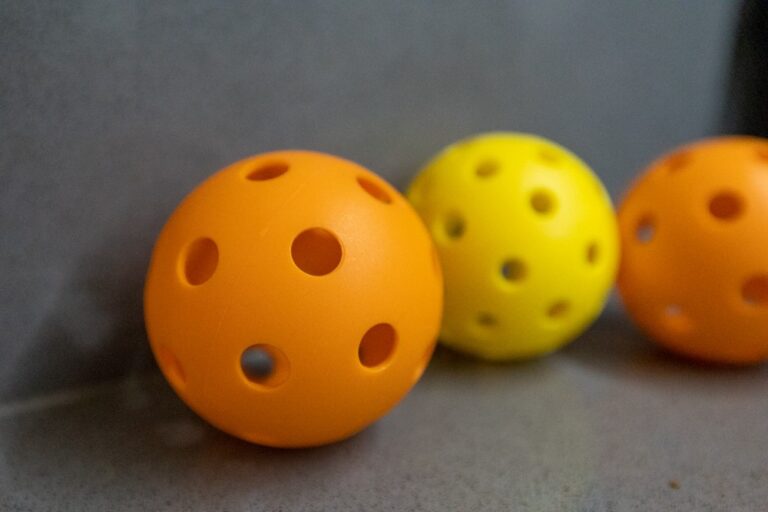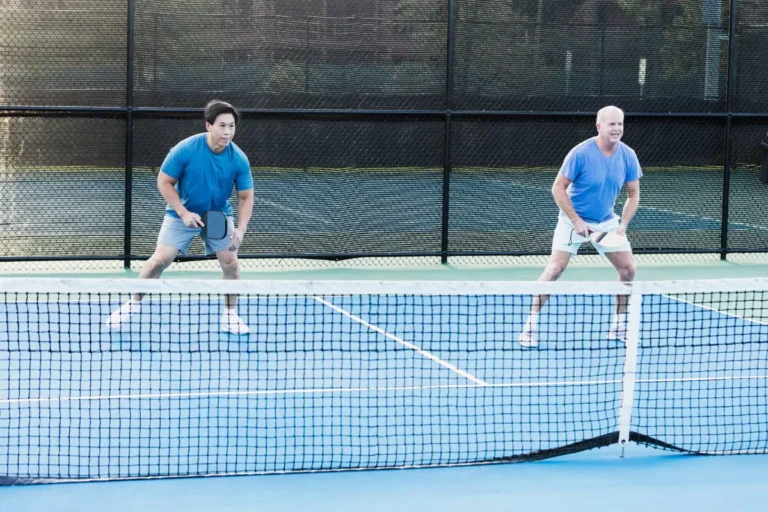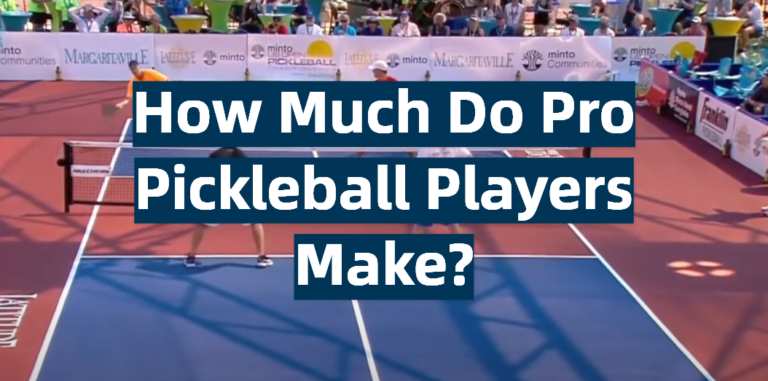Maximize Space: How Many Pickleball Courts Fit on a Tennis Court?
Optimizing Space: How Many Pickleball Courts Can Fit on a Tennis Court?
In this article, we’ll explore the key question: how many pickleball courts fit on a tennis court?
A standard tennis court can accommodate up to four pickleball courts. The most common layout involves dividing the tennis court into four quadrants, with the pickleball courts oriented perpendicular to the tennis net. This allows for adequate space between the courts for sidelines and player movement. However, the exact number of pickleball courts that can fit on a tennis court may vary slightly depending on the specific dimensions of the tennis court and the desired layout of the pickleball courts.
Key Takeaways
- A standard tennis court can accommodate up to four pickleball courts, making it an efficient way to maximize available space for the growing sport of pickleball.
- When converting a tennis court to pickleball, consider factors such as court dimensions, layout options, court markings, net height, and player safety to ensure a successful and enjoyable playing experience.
- Permanent conversions involve installing dedicated pickleball nets, posts, and court surfacing, while temporary conversions allow for flexibility between tennis and pickleball play using blended lines and portable nets.
- Building dedicated pickleball court complexes offers advantages such as customized court layouts, enhanced amenities, increased capacity, and improved safety and durability, but comes with higher upfront costs compared to converting existing tennis courts.
- As the popularity of pickleball continues to grow, providing accessible and enjoyable playing opportunities through court conversions or dedicated facilities is crucial for the growth and sustainability of the sport.
By understanding the key aspects of converting tennis courts to pickleball and the benefits of dedicated pickleball facilities, communities and organizations can make informed decisions to meet the increasing demand for this exciting sport.
At Pickleball Toolbox, we understand the importance of optimizing your available space to accommodate the growing pickleball community. Whether you’re a park manager, a school administrator, or a pickleball enthusiast looking to create your own backyard court, understanding the dimensions and layout possibilities is crucial. So, let’s dive in and discover how you can transform a tennis court into a pickleball haven!
The Key Question: How Many Pickleball Courts Fit on a Tennis Court?
Understanding Court Dimensions
To answer the question of how many pickleball courts can fit on a tennis court, we first need to understand the dimensions of each type of court. According to the USA Pickleball Association (USAPA), the official dimensions of a pickleball court are as follows:
- Singles court: 20 feet wide x 44 feet long
- Doubles court: 20 feet wide x 44 feet long
On the other hand, a regulation tennis court has the following dimensions:
- Singles court: 27 feet wide x 78 feet long
- Doubles court: 36 feet wide x 78 feet long
To better visualize the difference in size, take a look at this table comparing the dimensions of a standard tennis court and a standard pickleball court:
| Court Type | Width | Length | Area (sq. ft.) |
|---|---|---|---|
| Tennis (Singles) | 27 ft. | 78 ft. | 2,106 |
| Tennis (Doubles) | 36 ft. | 78 ft. | 2,808 |
| Pickleball (Singles/Doubles) | 20 ft. | 44 ft. | 880 |
As you can see, a pickleball court is significantly smaller than a tennis court, requiring only about 880 square feet of space compared to the 2,106-2,808 square feet needed for a tennis court.
Making the Math Work: Fitting Pickleball Courts on a Tennis Court
Now that we have a clear understanding of the court dimensions, let’s explore how many pickleball courts can theoretically fit on a regulation tennis court. The most common approach is to divide the tennis court into four quadrants, effectively creating space for four pickleball courts.
Here’s a breakdown of how this layout works:

- Orient the pickleball courts perpendicular to the tennis net.
- Align the pickleball baselines with the tennis court’s singles sidelines.
- Center the pickleball nets along the tennis court’s baseline and service line.
- Ensure there is adequate space between the pickleball courts for sidelines and player movement.
Using this layout, you can comfortably fit four pickleball courts on a single tennis court. However, it’s important to consider the non-playing areas, or out-of-bounds, for each pickleball court. The recommended court size for pickleball, including the out-of-bounds area, is typically 30 feet wide x 60 feet long. While you can still fit four courts using these dimensions, it may result in slightly narrower sidelines and less space between courts.
An alternative layout involves orienting two pickleball courts parallel to the tennis net. This arrangement leaves more space on the sides but accommodates fewer courts overall. It can be a good option if you prioritize comfort and player movement over maximizing the number of courts.
Variations and Considerations
When converting a tennis court into pickleball courts, there are a few variations and considerations to keep in mind:
- Not all tennis courts have perfectly square corners, which can affect the layout and dimensions of your pickleball courts. In such cases, you may need to adjust the orientation or spacing of the courts to ensure they fit properly.
- Another option to consider is using a temporary pickleball court setup on a tennis court. This involves lowering the tennis net to the appropriate height for pickleball (34 inches at the center) and marking the pickleball court lines using temporary tape or paint. This approach allows you to use the tennis court for both sports without permanent modifications.
Additional Considerations for Converting a Tennis Court to Pickleball Courts
Permanent vs. Temporary Conversion
When converting a tennis court to pickleball courts, you have the option of making a permanent or temporary conversion:
- Permanent conversion: This involves installing dedicated pickleball nets, posts, and court surfacing, as well as painting permanent pickleball court lines. This approach is ideal if you plan to prioritize pickleball play over tennis and want to create a high-quality, long-lasting setup.
- Temporary conversion: This allows you to use the existing tennis court infrastructure and add pickleball lines and nets as needed. This is often achieved by using “blended lines,” where both tennis and pickleball court lines are marked on the court in different colors. Temporary conversions are more cost-effective and offer greater flexibility if you want to accommodate both sports.
Another advantage of temporary conversions is the ability to use portable pickleball nets. These nets are designed to be easily set up and removed, allowing you to switch between tennis and pickleball play with minimal effort.
Importance of Proper Court Markings and Net Height
Regardless of whether you choose a permanent or temporary conversion, it’s crucial to ensure that your pickleball courts have proper markings and net height. Pickleball court lines are slightly different from tennis court lines, so it’s important to follow the official USAPA guidelines when marking your courts.

The key differences in pickleball court markings include:
- The non-volley zone (also known as the “kitchen”) is a 7-foot area on either side of the net where volleying is prohibited.
- The service courts are divided into two equal sections by a centerline, creating four service areas.
- The baseline and sidelines are marked 2 inches inside the actual playing area to create a perimeter around the court.
In addition to court markings, using the correct net height is essential for a regulation pickleball game. The official net height for pickleball is 34 inches at the center of the court, which is 2 inches lower than a tennis net. Make sure to adjust the net height accordingly when setting up your pickleball courts.
Other Factors to Consider
When converting a tennis court to pickleball courts, there are several other factors to consider ensuring a successful and enjoyable playing experience:
- Court Surface: Assess the condition and material of the existing tennis court surface. Pickleball can be played on various surfaces, including concrete, asphalt, and cushioned tennis court materials. However, cracks, uneven areas, or excessive wear may require repairs or resurfacing before converting the court.
- Line Markings: When painting pickleball court lines, choose a color that contrasts well with the existing court surface. This helps players easily distinguish the pickleball court boundaries and avoid confusion during play.
- Player Safety: Ensure there is adequate space around the perimeter of each pickleball court for player movement and safety. The USAPA recommends a minimum of 10 feet of clearance behind the baseline and 5 feet on either side of the sideline.
- Orientation: Consider the orientation of your pickleball courts to minimize sun glare during play. If possible, position the courts north-south to avoid direct sunlight in players’ eyes during morning or evening games.
- Budget and Timeframe: Determine your budget and timeframe for the court conversion project. Permanent conversions typically involve higher costs and longer installation times compared to temporary setups. Factor in the cost of materials, labor, and any necessary permits or approvals when planning your project.
By carefully considering these factors and working with experienced professionals, you can create a successful and enjoyable pickleball facility that meets the needs of your community or organization.
Building Dedicated Pickleball Court Complexes
While converting tennis courts to pickleball courts is a popular and cost-effective solution, building dedicated pickleball court complexes offers several advantages. Purpose-built pickleball facilities are designed specifically for the sport, providing optimal court dimensions, spacing, and amenities.
Some of the benefits of dedicated pickleball court complexes include:
- Customized Court Layouts: Dedicated pickleball facilities allow you to design the court layout and spacing to maximize player comfort and safety. You can ensure adequate distance between courts, provide ample sideline and baseline clearance, and orient the courts to minimize sun glare.
- Enhanced Amenities: Purpose-built pickleball complexes often include additional amenities to enhance the player experience. These may include:
- Shade structures
- Seating areas
- Water fountains
- Restrooms
- Lighting for night play
By providing these amenities, you create a more enjoyable and comfortable environment for players.
- Increased Capacity: Dedicated pickleball facilities can accommodate a larger number of courts compared to converted tennis courts. This allows you to host more players, tournaments, and events, ultimately growing the pickleball community in your area.
- Improved Safety and Durability: When building pickleball courts from scratch, you have the opportunity to choose high-quality materials and construction methods that prioritize player safety and court longevity. This may include:
- Using slip-resistant court surfaces
- Installing durable nets and posts
- Incorporating proper drainage systems to minimize water accumulation
The cost of building a dedicated pickleball court complex varies depending on factors such as location, site preparation, materials, and amenities. On average, the cost per court can range from $20,000 to $40,000, with additional expenses for fencing, lighting, and other features. While the upfront investment may be higher compared to converting existing tennis courts, the long-term benefits of a purpose-built facility can justify the expense.
Conclusion
In conclusion, how many pickleball courts fit on a tennis court? The answer is typically four courts, with variations depending on the layout and considerations. By understanding court dimensions, exploring different layout options, and carefully considering factors such as court markings, net height, and player safety, you can successfully convert a tennis court into a pickleball haven.
As the popularity of pickleball continues to grow, the demand for more courts and dedicated facilities will only increase. Whether you choose to convert existing tennis courts or build a new pickleball complex, providing accessible and enjoyable playing opportunities is crucial for the growth and sustainability of the sport.
At Pickleball Toolbox, we are passionate about helping pickleball enthusiasts optimize their playing experience. We encourage readers to share their own experiences with converting courts or playing on converted courts. By fostering a community of knowledge-sharing and support, we can work together to create more opportunities for people to enjoy this wonderful sport.
So, grab your paddle, head to the nearest pickleball court (or converted tennis court), and join the millions of players who have discovered the joy and excitement of pickleball!
Bonus Section: Frequently Asked Questions
- Can I play both tennis and pickleball on the same court?
- Yes, it is possible to play both tennis and pickleball on the same court by using a temporary conversion setup or installing blended lines.
- This allows you to switch between the two sports as needed, maximizing the versatility of your court.
- What are the costs involved in converting a tennis court to pickleball?
- The costs of converting a tennis court to pickleball can vary depending on the type of conversion (permanent or temporary), the condition of the existing court, and the materials used.
- Temporary conversions using portable nets and taped lines can cost a few hundred dollars.
- Permanent conversions with dedicated nets, posts, and painted lines can range from $1,000 to $5,000 or more.
- Do I need any special equipment to play pickleball on a converted tennis court?
To play pickleball on a converted tennis court, you will need:- Pickleball paddle
- Pickleball (perforated plastic ball)
- Regulation pickleball net
- Temporary court line tape or paint (if using a temporary conversion setup)
Other optional equipment includes:
- Court shoes
- Safety glasses
- Padded court dividers to separate multiple games
- How long does it take to convert a tennis court to pickleball?
- The time required to convert a tennis court to pickleball depends on the type of conversion and the condition of the existing court.
- A temporary conversion using portable nets and taped lines can be completed in a few hours.
- A permanent conversion with installed nets, posts, and painted lines may take several days to a week, depending on the scope of the project and the curing time for the court surfacing materials.
- Are there any official rules or regulations for converting tennis courts to pickleball?
- The USA Pickleball Association (USAPA) provides official rules and guidelines for pickleball court dimensions, net height, and court markings.
- While there are no specific regulations for converting tennis courts to pickleball, it is recommended to follow the USAPA guidelines as closely as possible to ensure a safe and enjoyable playing experience.
- Additionally, consult with local authorities or the facility owner to ensure compliance with any specific requirements or permits needed for the conversion project.
By addressing these common questions and concerns, we hope to provide valuable information for those considering converting a tennis court to pickleball. At Pickleball Toolbox, our goal is to empower pickleball enthusiasts with the knowledge and resources they need to create more opportunities for play and grow the sport in their communities.

